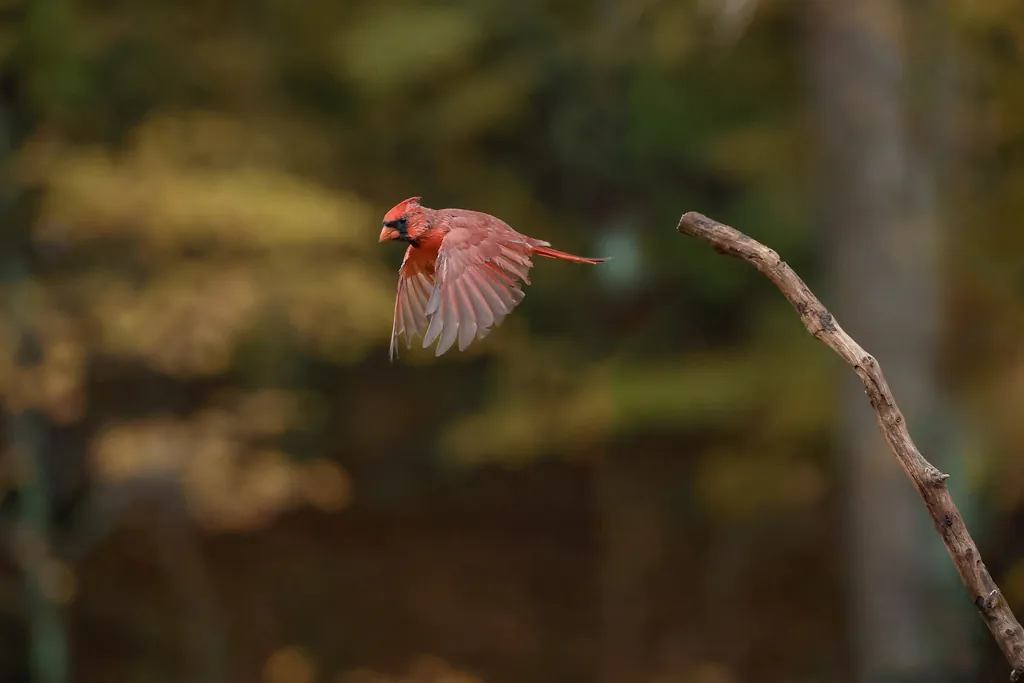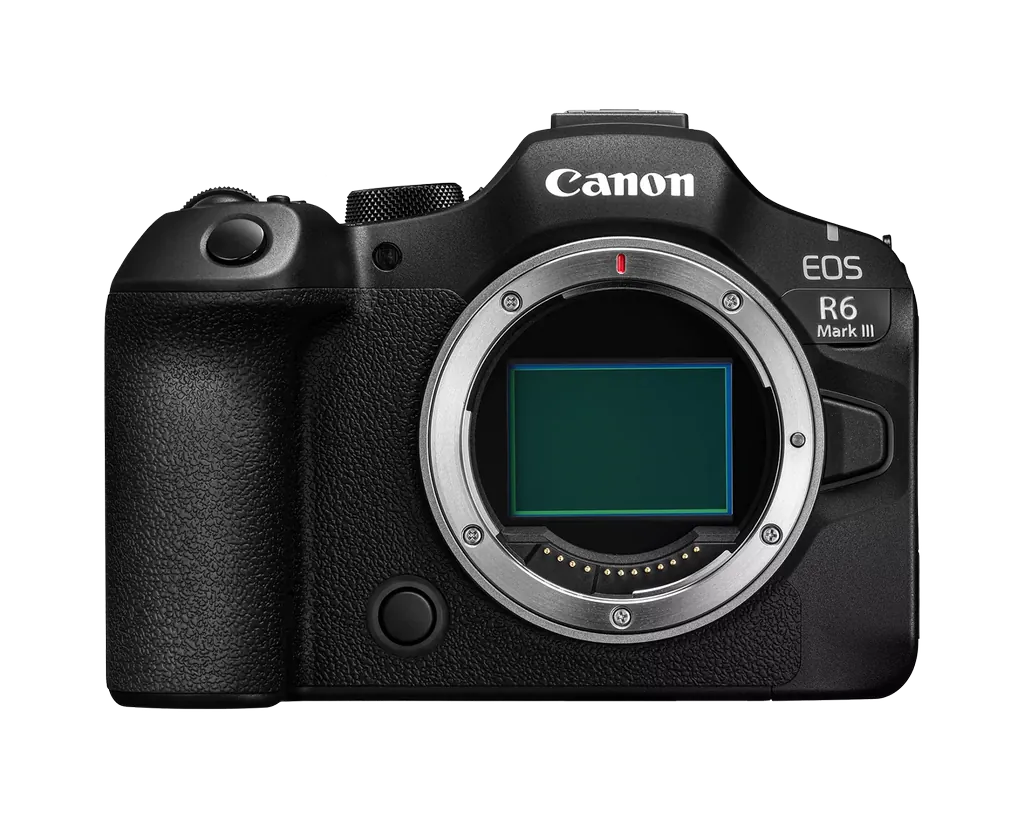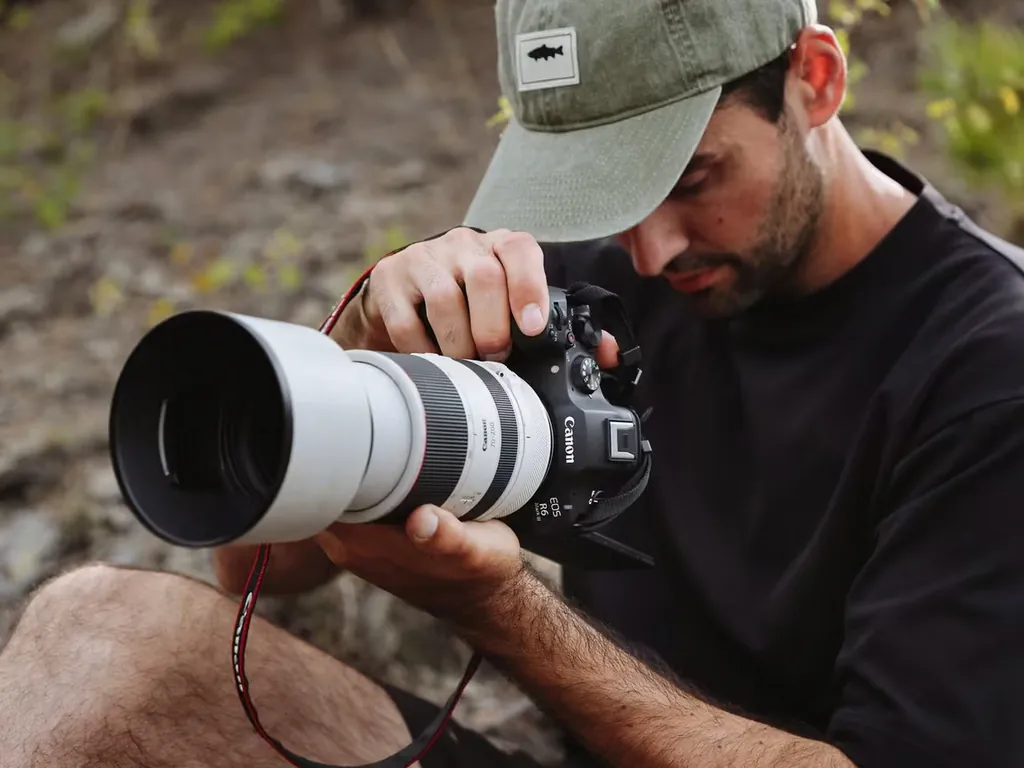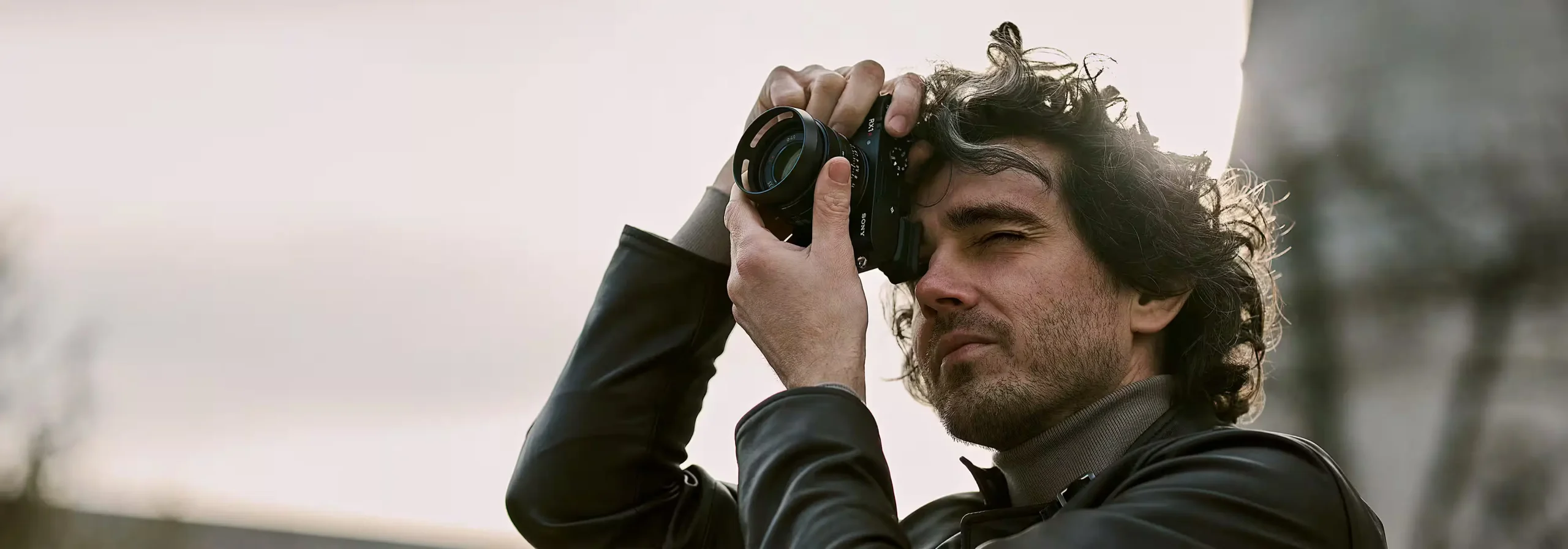The Canon EOS R6 series has always represented the perfect middle ground in Canon’s mirrorless lineup—professional performance without the flagship price tag, powerful features without overwhelming complexity, and build quality that inspires confidence without breaking your back. With the EOS R6 Mark III, Canon has refined this formula even further, creating what might be the best all-around camera for serious photographers and content creators in 2025.
Whether you’re a wedding photographer who needs absolute reliability, a wildlife shooter demanding speed and resolution, or a hybrid creator balancing stills and video, the R6 Mark III delivers the tools you need without forcing you to choose between capabilities or compromise on quality.

What’s New and Why It Matters
More Resolution, Same Speed
The jump from 24.2MP in the Mark II to 32.5MP in the Mark III represents a 34% increase in resolution—and that extra detail makes a real difference. You can crop more aggressively for wildlife and sports, meet commercial client requirements that often specify 30MP minimum, and print substantially larger whilst maintaining quality.
What’s remarkable is that Canon achieved this without sacrificing speed. The camera still shoots at 40 fps with the electronic shutter, and rolling shutter distortion actually improves despite the higher pixel count. You genuinely get more of everything with zero trade-offs.
CFexpress Changes Everything
The addition of a CFexpress Type B card slot alongside the SD slot might not sound exciting, but it transforms how the camera performs in real-world shooting. CFexpress cards write 5-6 times faster than SD cards, which means:
- The buffer clears almost instantly after 40 fps bursts
- You can shoot continuously without that frustrating “waiting for the camera” delay
- High-bitrate video recording never encounters “card too slow” warnings
- Internal 7K RAW video recording becomes possible (SD cards simply aren’t fast enough)
Professional photographers who’ve already invested in CFexpress infrastructure for flagship bodies can now use the same cards across their entire kit. And if you don’t need maximum performance, you can still use affordable SD cards exclusively.
Register People Priority: The Feature You Didn’t Know You Needed
This feature, inherited from Canon’s flagship R1 and R5 Mark II, fundamentally changes wedding and event photography. You photograph up to 10 people, register their faces in the camera, and the autofocus system automatically prioritizes them over everyone else in the frame.
For wedding photographers, this means the camera always focuses on the bride and groom during group photos, even with dozens of faces competing for attention. For event photographers, register your VIPs once and the camera tracks them automatically throughout the day. For sports photographers, register key athletes and never lose them in crowded game situations.
It’s one of those features that seems minor until you use it, then you can’t imagine working without it.
Video Capabilities That Compete with Cinema Cameras
The R6 Mark III’s video specifications represent a massive leap forward:
7K RAW at 60p internally – This generates cinema-quality footage with extraordinary post-production flexibility. Starting with 7K footage allows you to crop, stabilize, and reframe whilst delivering 4K final output with zero quality loss.
Open Gate recording – Use the entire sensor in its native 3:2 aspect ratio, then reformat for any platform in post. Shoot once and deliver vertical 9:16 for social media, horizontal 16:9 for YouTube, square 1:1 for Instagram, or any other format without resolution penalties. This is the first Canon EOS R camera to offer Open Gate recording.
Cinema camera autofocus algorithms – The Mark III uses Movie Servo AF algorithms from Canon’s C400 and C80 cinema cameras, delivering smooth, natural focus transitions that look like professional manual focus pulling rather than robotic autofocus.
4K 120fps and 2K 180fps – Professional slow-motion capabilities with audio recording maintained at all frame rates (except dedicated S&F mode).
For hybrid shooters and content creators, these video specifications essentially give you a professional video camera and professional stills camera in one body.

How It Compares to Previous Generations
From the Original R6 (2020)
If you’re still shooting with the original R6, the Mark III represents a transformational upgrade:
- 60% more resolution (32.5MP vs 20MP)
- Double the burst speed (40 fps vs 20 fps)
- Vastly superior video (7K RAW vs 4K with crop and overheating concerns)
- CFexpress slot for professional workflow
- Register People Priority and numerous flagship AF features
- Better image stabilization (8.5 stops vs 8 stops)
The original R6 was excellent for its time, but the Mark III addresses every limitation whilst building on every strength.
From the R6 Mark II (2022)
The Mark II remains an excellent camera, but the Mark III brings meaningful improvements:
- 34% more resolution (32.5MP vs 24.2MP) with no speed penalty
- CFexpress Type B slot replacing the second SD slot for professional performance
- Register People Priority and other flagship autofocus features
- 7K RAW internal recording vs 6K RAW
- Open Gate recording for multi-platform content creation
- Cinema camera AF algorithms for natural video focus transitions
- Improved image stabilization (8.5 stops vs 8 stops)
If you’re shooting professionally and frequently hitting the Mark II’s limitations—whether that’s resolution, buffer depth, video capabilities, or advanced AF features—the Mark III represents a worthwhile upgrade. If the Mark II meets your needs comfortably, it remains an excellent camera that will continue serving you well.

Who Should Buy the R6 Mark III?
Wedding and Event Photographers
The R6 Mark III might be the perfect wedding camera. Register People Priority ensures you never miss focus on the bride and groom, 40 fps with pre-capture captures every critical moment, dual card slots provide backup security, and exceptional low-light performance handles challenging venue lighting. The 32.5MP resolution satisfies album printing and commercial licensing requirements whilst maintaining the excellent high-ISO performance the R6 series is known for.
Wildlife and Sports Photographers
The combination of 32.5MP resolution and 40 fps burst rate provides both the detail for cropping distant subjects and the speed for capturing peak action. The improved buffer capacity and CFexpress write speeds mean you can shoot extended sequences without interruption. Subject detection and tracking reliably handle fast-moving subjects even in challenging conditions.
Hybrid Shooters and Content Creators
If you balance photography and videography equally, the R6 Mark III eliminates compromises. Professional-quality 32.5MP stills combine with cinema-grade 7K RAW video in one body. Open Gate recording solves the multi-platform challenge, whilst improved autofocus and stabilization benefit both stills and video equally. You can legitimately replace both a dedicated stills camera and dedicated video camera with one R6 Mark III.
Commercial and Corporate Photographers
The 32.5MP resolution meets commercial client specifications whilst maintaining reasonable file sizes. Canon’s renowned color science delivers accurate, pleasing skin tones requiring minimal correction. Professional build quality and the 500,000-cycle shutter rating inspire confidence for high-volume shooting. Tethering stability and workflow integration support efficient studio operations.
Enthusiasts Ready to Step Up
If you’ve been shooting with entry-level or mid-range cameras and you’re ready for professional-grade performance, the R6 Mark III provides flagship features at 6-series pricing. You get the capabilities to grow into rather than capabilities you’ll outgrow, in a body that’s approachable rather than overwhelming.

What About Competitors?
Sony A7 IV
Sony’s A7 IV offers similar resolution (33MP vs 32.5MP) but substantially slower burst rate (10 fps vs 40 fps), less impressive video (4K 60p vs 7K RAW), and slower dual SD card configuration. Sony’s lens ecosystem offers more third-party options, but Canon’s RF mount provides optical quality advantages. Battery life favors Sony significantly if that’s a priority concern.
Nikon Z6 III
Nikon’s recently announced Z6 III provides similar specifications but with lower resolution (24.5MP) and slower burst rate (20 fps). If you’re already invested in Canon’s RF system, there’s little reason to switch. If you’re starting fresh or have existing Nikon F-mount lenses, the Z6 III merits consideration.
Canon EOS R5 Mark II
Within Canon’s lineup, the R5 Mark II offers higher resolution (45MP), 8K video, and dual CFexpress slots, but costs approximately 40% more. Unless you specifically need that extra resolution for commercial work or the 8K video capabilities, the R6 Mark III delivers exceptional value. Most photographers will find the R6 Mark III’s specifications more than adequate whilst appreciating the cost savings.

The Bottom Line
The Canon EOS R6 Mark III represents the culmination of everything Canon has learned about what hybrid shooters and serious photographers actually need. It takes the beloved R6 formula—professional performance, excellent ergonomics, reliable build quality—and elevates it with meaningful improvements across every specification.
The 32.5MP resolution provides detail and cropping flexibility without sacrificing the speed and low-light performance that defined previous generations. The CFexpress card slot transforms workflow efficiency for professional shooting. Register People Priority and other flagship autofocus features cascade down from cameras costing substantially more. And the video capabilities genuinely compete with dedicated cinema cameras.
At £2,779, the R6 Mark III occupies that rare position of offering more camera than most photographers will ever fully utilize whilst remaining accessible to serious enthusiasts ready to step up from entry-level bodies. It’s the camera you can grow into rather than grow out of, the camera that doesn’t force compromises between stills and video, and the camera that simply gets out of your way and lets you focus on capturing moments rather than managing technical limitations.
Whether you’re upgrading from a previous R6, stepping up from an enthusiast body, or building your first professional Canon RF system, the EOS R6 Mark III deserves serious consideration. It might just be the best all-around camera Canon has ever made.
Buy The Canon EOS R6 Mark III

Buy from Campkins Cameras. Family-owned since 1952, we offer expert Canon RF advice and genuine after-sales support. Call 01223 368087 or visit our Cambridge showroom.




